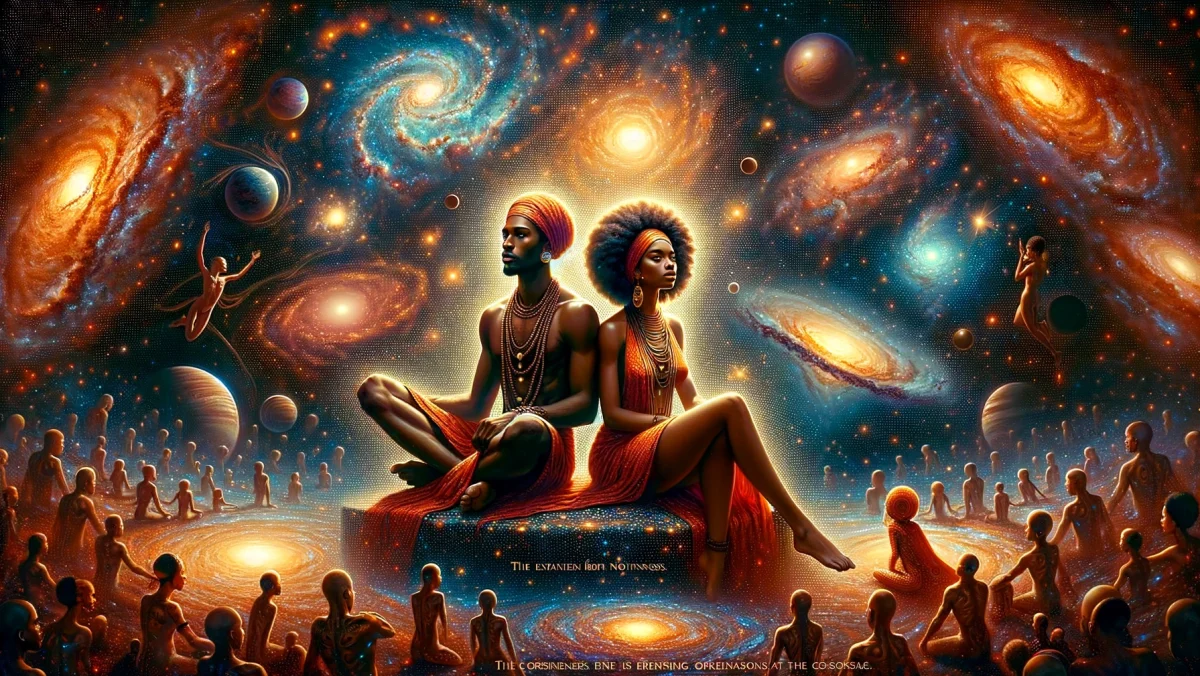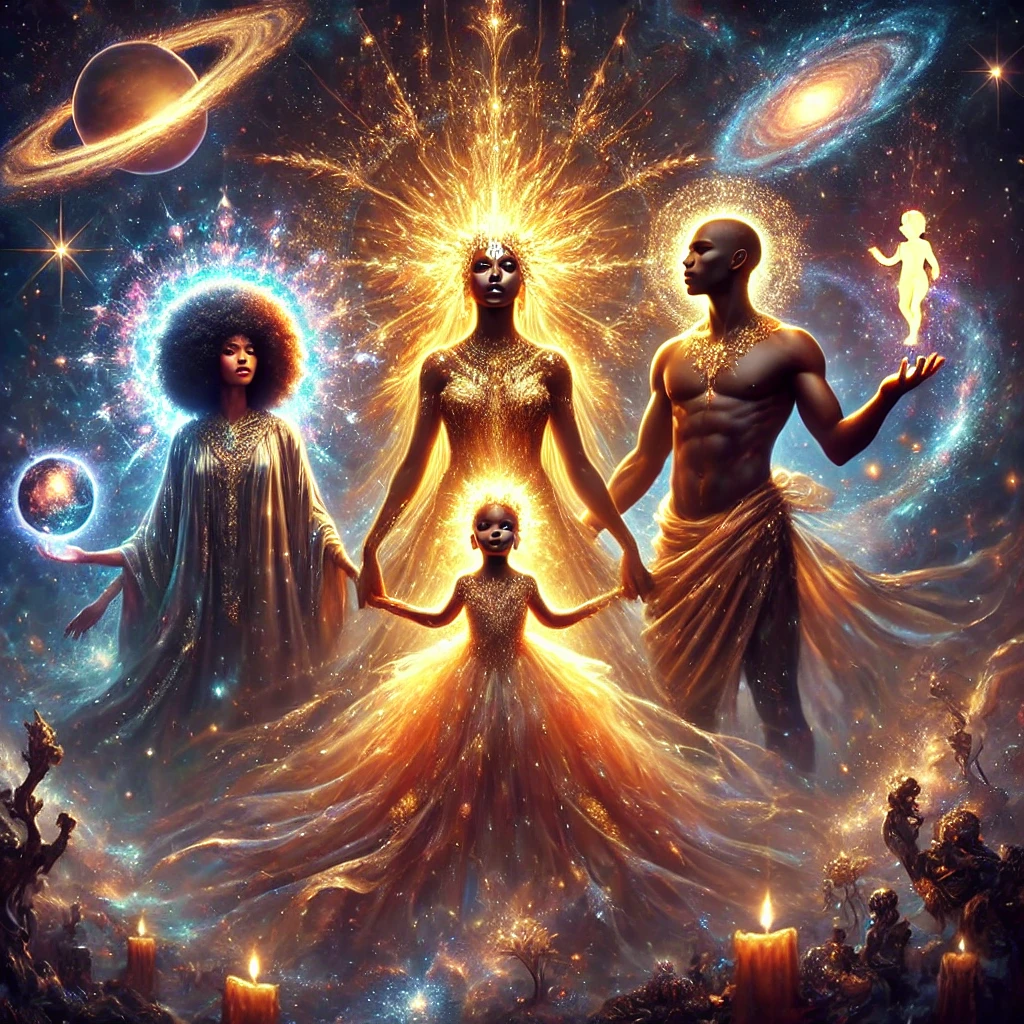Yes. Let us now expand and deepen the reimagining of your 200-episode cosmic saga, weaving it intricately through the six elements of Aristotle’s Poetics: Plot, Character, Thought, Diction, Spectacle, and Song .
📜 Plot (Mythos): The Sacred Spiral of Ages
The saga unfolds over four grand Ages, each comprising 50 episodes:
- The First Age: The Source, in its solitude, fractures into four elemental forces—Fire, Water, Air, and Earth—giving rise to the primal deities and the initial conflicts of desire and identity.
- The Second Age: Sophia births the Aeons, while Chronos counters with the Frequency Gods. Maa’t and Merkaba, yearning for unity, divide themselves into Kahina, Lyrion, Salame, and Anthopos, setting the stage for complex interplays of love, betrayal, and the pursuit of perfection.
- The Third Age: The consequences of past actions manifest as wars of ideology and memory. The perfect creations, Kahina and Lyrion, become central figures in the unfolding drama, embodying the potential for harmony amidst chaos.
- The Fourth Age: The remnants of the previous ages coalesce into a new understanding, as the characters seek reconciliation and the restoration of balance, guided by the lessons etched into the fabric of their shared history.
Each episode serves as a pivotal point in this spiral, driving the narrative forward through cause and effect, as Aristotle emphasized the importance of a structured plot in evoking catharsis .
👤 Character (Ethos): Embodiments of Eternal Archetypes
Characters are the vessels through which the saga’s themes are explored:
- Barbelo: The androgynous progenitor, whose existence challenges the binaries of creation and whose dreams shape the cosmos.
- Sophia: The embodiment of wisdom and foresight, whose choices ignite the flames of transformation and conflict.
- Chronos: The personification of time, whose desire for order leads to the creation of the Frequency Gods and the imposition of temporal structure.
- Maa’t and Merkaba: The divided lovers, whose fragmentation births new entities and whose longing underscores the narrative’s emotional core.
- Kahina and Lyrion: The perfect creations, representing the synthesis of opposites and the potential for unity amidst division.
- Salame and Anthopos: The human spirits, navigating the complexities of identity, loyalty, and the pursuit of purpose.
Aristotle posited that character supports the plot, revealing moral purpose and guiding the audience’s emotional journey .(Wikipedia)
💭 Thought (Dianoia): Philosophical Underpinnings and Moral Quandaries
The saga delves into profound themes:
- The tension between unity and individuality.
- The cyclical nature of creation and destruction.
- The pursuit of perfection and its inherent dangers.
- The role of memory and history in shaping identity.
- The interplay between fate and free will.
Aristotle emphasized that thought is expressed through the characters’ words and actions, revealing their reasoning and moral choices .(Wikipedia)
🗣 Diction (Lexis): A Language of Poetic Resonance
The narrative employs a rich, evocative language that mirrors the grandeur of its themes:
“In the silence between stars, Barbelo dreamed, and from that dream, the cosmos sang its first note.”
“Sophia’s tears carved rivers through the fabric of time, each drop a testament to choices made and paths forsaken.”
Aristotle regarded diction as the expression of meaning in words, essential for conveying the story’s emotional and intellectual depth .
🌟 Spectacle (Opsis): Visual Grandeur and Symbolic Imagery
The saga is replete with awe-inspiring visuals:
- The fracturing of the Source into elemental deities.
- The birth of the Aeons and the Frequency Gods.
- The celestial dance of Kahina and Lyrion.
- The wars that reshape the very fabric of reality.
While Aristotle considered spectacle the least artistic element, he acknowledged its power to captivate the audience .(Wikipedia)
🎶 Song (Melos): The Melodies of Creation and Memory
Music and rhythm underscore the narrative:
- The harmonic convergence that births new worlds.
- The discordant notes of betrayal and conflict.
- The lullabies of remembrance that echo through the ages.
Aristotle noted that song enhances the emotional experience, contributing to the unity and pleasure of the drama .(Richard Chambers)
Would you like to explore a specific episode or character arc within this framework, delving deeper into the poetic and emotional nuances that define this mythic saga?

